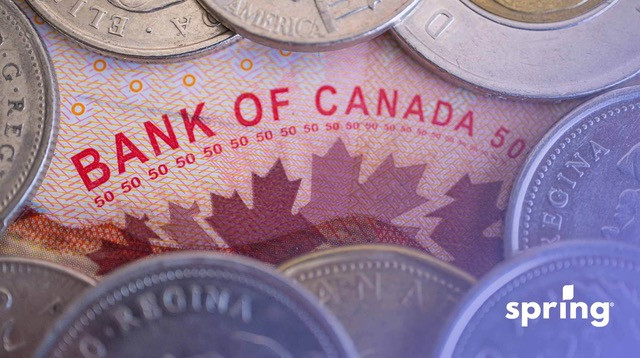RRSPs are one of the best financial vehicles available to lower your yearly taxes and achieve significant, long-term savings goals. Every dollar you put in lowers your annual taxable income, which lowers the amount of annual taxes you’ll owe that year. At the same time, those RRSP dollars you contribute steadily gain interest year-over-year.
With tax season just around the corner, here’s a quick look at the key dates and RRSP contribution deadlines that will help you keep more money in your pocket.
Just getting started with RRSPs? Check out our RRSP tips for beginners.
What Is The RRSP Deadline for 2025?
The last day to make RRSP contributions you can claim on your 2024 taxes is March 03, 2025, not the end of the 2024 calendar year.
Contributions made to your RRSP after this date cannot be claimed on your 2024 taxes and will instead be eligible for the 2025 tax year.
If you haven’t reached your RRSP contribution limit for the 2024 tax year (see the contribution limits section below) and you have some extra money, it might be a good idea to contribute some to your RRSP before March comes to obtain the maximum amount. This will help lower your 2024 tax bill. However, it’s important that you don’t deposit excess amounts.
What is the RRSP Contribution Limit for 2024?
Each year there’s a limit to how much money you can contribute to your RRSP. That limit changes from year to year and is also relative to your income. For the 2024 tax year, the contribution limit is 18% of your pre-tax income, up to $32,490. The contribution limit for the 2023 tax year was $31,560.
Your limit will be reduced by any contributions you’ve made to a sponsored or company/employer pension plan. This amount will be indicated on the T4 tax slip you receive from your employer.
It’s also possible to contribute over your limit by up to $2000, though you won’t receive a tax deduction for the excess contribution. If you over-contribute above $2000, you’ll have to pay a tax of 1% per month on the excess, though there are exemptions, and you can apply to have the penalties waived. That said, if you do have any contribution room left, it can be carried forward from previous years to future years.

If You Miss The RRSP Deadline
If you miss the deadline or don’t reach your RRSP contribution limit for 2023, don’t sweat it. Unused portions of your contribution room roll forward indefinitely, year-over-year, increasing your RRSP deduction limit on your taxes.
For example, let’s say 2021 is the first year you’re eligible to deduct RRSP contributions on your taxes. Let’s also say your contribution limit that year was $10,000 (18% of your pre-tax income) but you didn’t contribute anything to an RRSP. In this case, all of your contribution room ($10,000) rolls forward from the preceding tax to the following year. In that case, you’ll be able to deduct $10,000 of RRSP contributions plus your 2024 RRSP contribution limit.
You can find your current unused RRSP contribution limit in several ways. The simplest way is to check your previous year’s Notice of Assessment. This is sent to you by the Canada Revenue Agency after you file your taxes each year. You can also call the CRA and at 1-800-267-6999.
Maxing Out Your RRSP
If you have the ability to do so, maxing out your yearly RRSP contributions is one of the smarter things you can do with your money.
However, RRSP accounts typically “lock in” your funds for a set period of time, meaning you can’t easily withdraw them if you need to. You’ll also need to pay taxes on any RRSP amounts you withdraw. So you should only be maxing out your RRSP contributions if you feel comfortable setting that amount of money aside for the long-term.
However, if you have extra money and you’re deciding between putting it aside in a savings account, TFSA, or RRSP, it’s generally always wisest to max out your RRSPs first.
Are RRSP Loans A Good Idea?
If you want to max out your RRSP contribution limits but don’t have enough money to do it, you might want to consider an RRSP loan. It’s not the right option for every financial scenario but in some cases, it makes sense to borrow short-term in order to save long-term by paying less tax. This is particularly true if you have an average-to-high income, due to tax brackets. A RRSP loan could reduce your overall tax burden.
In Canada, the higher your income is, the more taxes you pay. If you make below $57,375 your annual tax rate is 15%. If you make more than that, the dollars you earn above $57,375 are taxed higher and higher at different thresholds. Each of these thresholds is called a tax bracket.
For example, if you earn $60,000 per year, your tax rate will be 15% on the first $57,375 and 20.5% on the remaining $2,625. If you contribute more than $2,625 to your RRSP, however, you’ll lower your taxable income enough so that you will stick to the lower tax rate of 15%. In other words, you won’t be paying tax on the $2,625.
In this scenario, an RRSP loan may make sense if you don’t have extra cash on hand to contribute. By taking out an RRSP loan for $2,625(or more) and contributing it to your RRSP, you essentially lower your tax bracket. You’ll need to repay the loan in monthly installments, but over time, the money you save on your annual taxes and the interest earned (tax-free) on your RRSP contributions can make this a financially sound option.
Types Of RRSPs
In Canada, there are a few different types of RRSPs. That said, it’s important to keep in mind that no matter how many RRSPs you have, you have to stay within your individual RRSP contribution limit. The combined total of all of your RRSP accounts counts toward your one limit
Group RRSPs
Group RRSPs are designed by employers to help you save retirement income. Not only do you make contributions from your paycheck to this account, but your employer will make contributions as well. You can choose to pay the amount your employer will match, or you can make larger contributions. However, you should keep your annual limit in mind.
Spousal RRSPs
A spousal RRSP is a Registered Retirement Savings Plan that allows you to make contributions in your spouse’s or common-law partner’s name. That said, these contributions are considered to be part of your RRSP contribution room since you can claim them on your income taxes. Your spouse or common-law partner’s RRSPs will contribute to their retirement income instead of yours. If you have some extra contribution room, it might be a good idea to add to your spouse’s RRSP.
Individual RRSPs
Individual RRSPs are your own RRSPs that you can open with any provider or financial institution. You can make investments in this account just like other RRSPs and choose whether you want to invest in mutual funds or other investments. You also get to choose the risk you want on the investments. Your financial advisor can help you with investment advice.
Withdrawing From An RRSP
With RRSPs, if you withdraw from your account early, you could be subject to penalties. However, there are three different ways you can withdraw funds from your account without any penalty.
Home Buyers Plan
The Home Buyers Plan allows those with RRSPs to withdraw funds in order to build or purchase their first home. You can withdraw up to $60,000 penalty-free and your given 15 years to return the funds. You have two years from the end of the calendar year you withdrew the funds to start paying the funds back.
Lifetime Learning Plan
The Lifetime Learning Plan is a program that allows those continuing full-time education to withdraw funds to cover expenses. You can withdraw up to $10,000 per year for 4 years from the first withdrawal. The total you can withdraw penalty free is $20,000.
Registered Retirement Income Fund
A Registered Retirement Income Fund, also known as an RRIF. This is what your retirement accounts get transferred into in order to start administering the funds. While you can choose to withdraw your RRSP funds through an RRIF at any time once you reach retirement age, there is a deadline for closing your RRSP.
In Canada, your RRSP must be closed by December 31 of the year that you turn 71. While you don’t have to start using the funds by the end of the year, you do have to turn the account into an RRIF. Once it’s in an RRIF, then you can decide when to start making withdrawals.
Penalties For Withdrawing Early
If you wish to withdraw any portion of the funds from the RRSP before you reach retirement age, it’s important to note that you will have to pay withholding taxes. The amount of withholding taxes you’re required to pay is based on how much you are withdrawing.
| Withdrawal Amount | Withholding Taxes |
| Up to $5,000 | 15% |
| $5,000 to $15,000 | 20% |
| Over $15,000 | 30% |
On top of paying the withholding taxes on amounts you withdraw, you’ll also have to claim the amounts withdrawn on your annual income tax return. These amounts are considered to be earned income and will be considered taxable income for the tax year that they were withdrawn. You will pay income tax on these amounts at your marginal tax rate.
Get approved for a personal loan today
Spring Financial offers personal installment loans of up to $35,000 and payment periods up to 60 months! Even if you have low credit, you can apply in 3 minutes and get the money e-transferred to your account within 24 hours!








